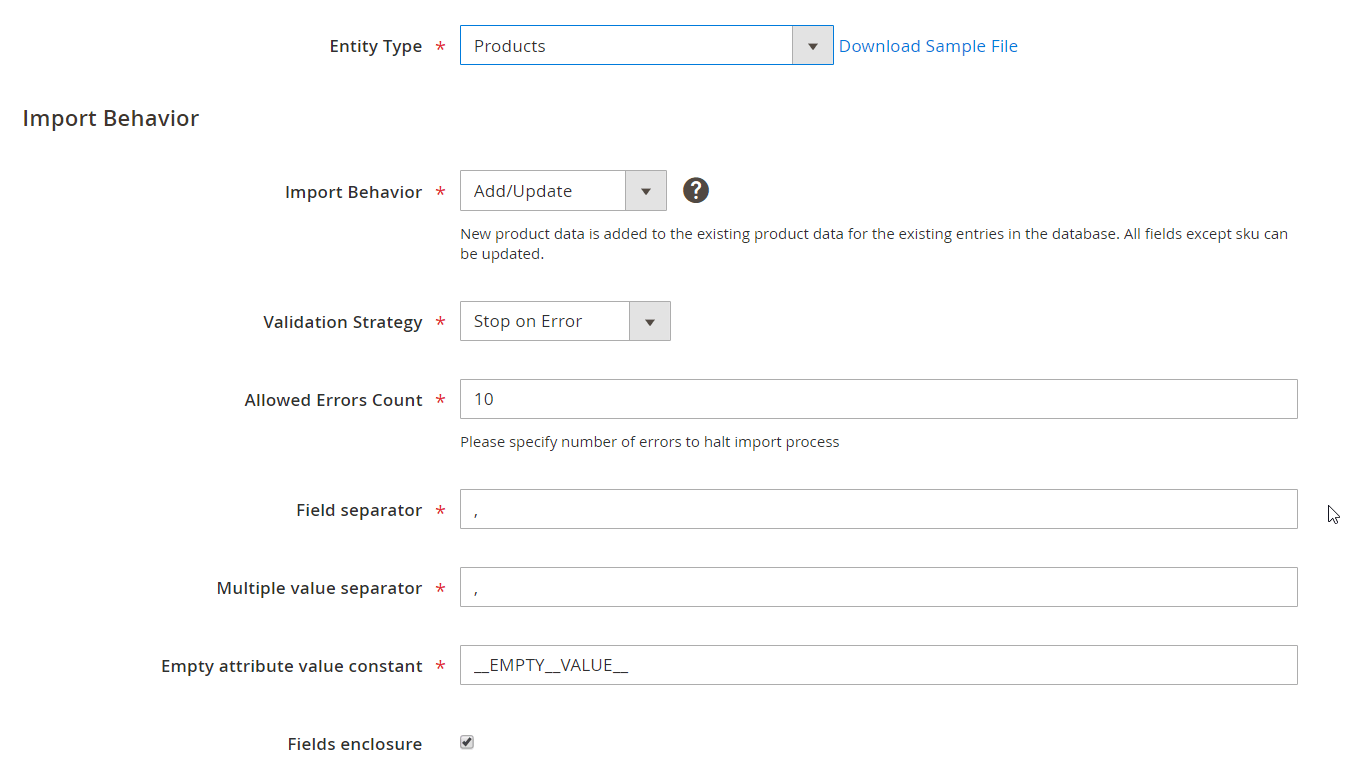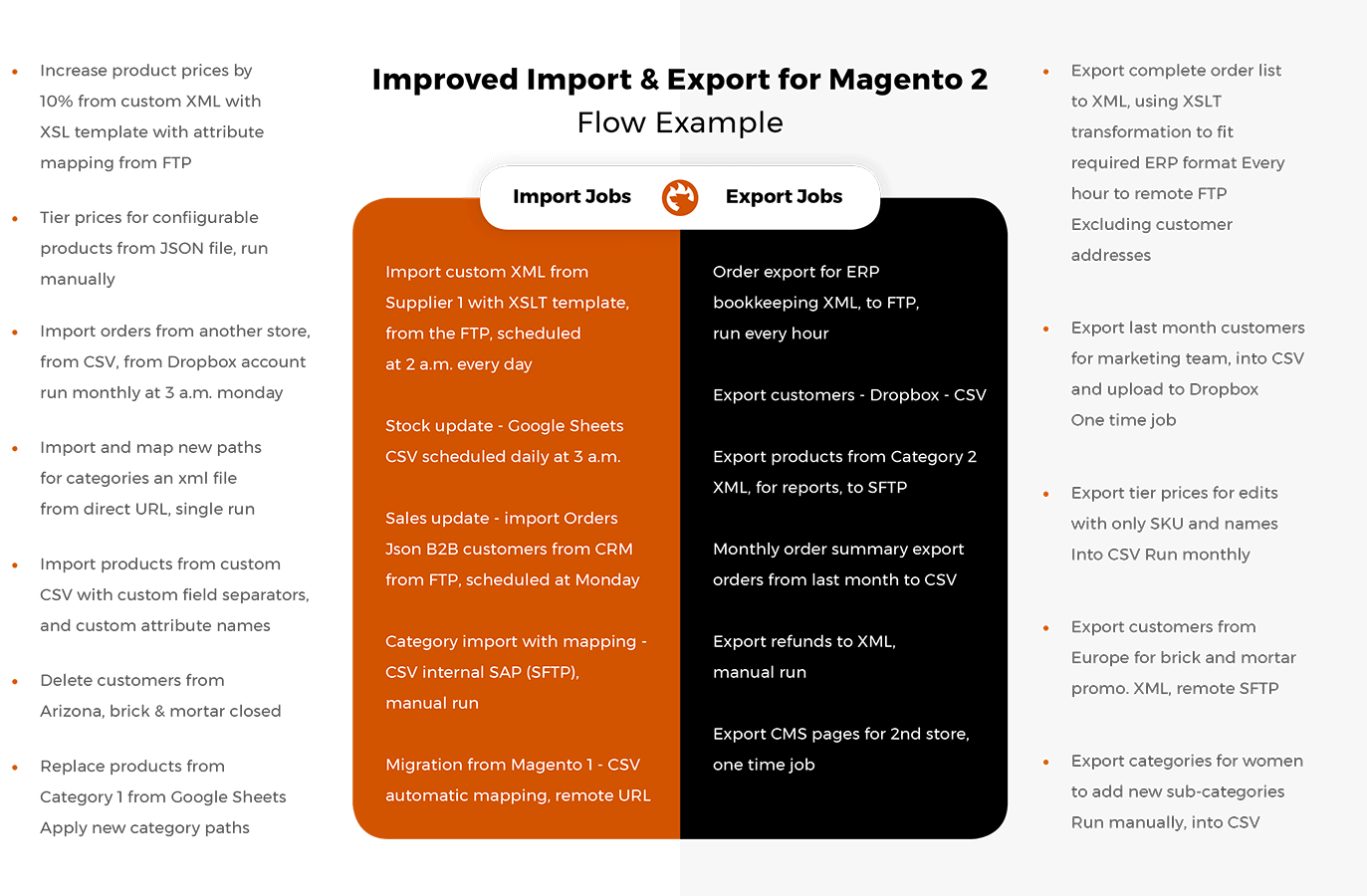
Magento is a unique phenomenon that has transformed e-commerce into a comfortable environment for merchants of any size. For years small and medium-sized businesses, enterprises have explored numerous of the platform’s perks to achieve higher levels of business growth. And all those experiments have become possible due to the extremely flexible modular nature of the platform, the versatility of its components, and smart community infrastructure.
Magento 2 — the latest and most advanced version — infuses online sellers with new ideas and inspirations thanks to its rich toolset. With the focus on bringing to life up-to-date business prospects and basic routine automation, the refined platform inherits full openness to modifications of all kinds. Thus, any e-commerce business is able to become an elite self-sufficient market unit and to put up the operation scale gradually over time.
So what are the options for those aiming at squeezing the most out of the famous e-commerce system?
Get to know Magento 2
In its core, Magento 2 is complex software for providing sellers with advanced opportunities in e-commerce business running and buyers with the most comfortable online shopping experience.
Presented by Open Source, Commerce and Cloud editions, Magento 2 provides specialized tools focused on B2C and B2B accordingly. As a whole, the platform overpowers competitors with all-round solutions on:
- sales (order processing, billing and shipping, quotes),
- customers (groups and segments),
- products (in/out-of-stock item management, categories and shared catalogs),
- content representation (Page Builder, CMS structures, content staging),
- marketing,
- and site analytics.
Stable system performance, fast page response speed, and attention to data security turn the balance to Magento 2 side for most merchants who search for a reliable store base.
Overstep the boundaries of traditional Magento 2 perception
Magento 2 has won millions of hearts, not by the rich toolset alone. The most important factor is that Magento 2 always provides room for improvement. This, in turn, stimulates active community participation in the platform growth and encourages developers all over the world to build software for stores with personalized routine and unique concepts.
We can divide the third-party modules into two sub-categories: ones that add new perks to the core and those that are intermediary for Magento 2 features to go global. The latter type forms the exact use-cases unprecedented before, implements features or processes foreign in nature to Magento 2 logic. Yeah, there is still an infinity of business prospects not introduced into Magento 2. And, with the right choice of third-party extensions, the problem can be solved as easy as via data transfer control.
The issue with data import and export within Magento 2 revolves around their under-developed state. The prerequisites allow users to transfer only the most crucial entities:
- products and product images,
- advanced pricing,
- customers,
- customer addresses,
- customer finances ( for Commerce and Cloud editions),
- stock sources.
They suffice for everyday store updates or keeping the right info at hand. A few baby steps can be done with the data following the customer management direction. However, the functionality is still not enough for a great job.
The transfer process itself comes with a bunch of technical restrictions (explore the details of the native import or export in the Magento 2 Docs. ). The entity attributes can be implemented or extracted as a table in a single format — CSV. You work solely with the file and remote server data sources. The requirements result in a strictly limited number of use-cases and a poor set-up for future growth.

Fortunately, the current market shares overlapping the Magento 2 sphere of influence present numerous pieces of software that can improve an e-commerce store workflow. Below we have some ideas on how to connect your store with some influential game-changers and perform ground-breaking Magento 2 integrations. These tips will help you get your system status to the point where every part is fully autonomous and works like a charm as a whole.
Case 1. Magento 2 and ERP integration
ERP, or enterprise resource planning, is an all-round helper in the unlimited number of use-cases. The suites of applications cover such a vast range of sphere that all types of business will certainly benefit from getting one as a toolset. If you own a small or middle-sized business, you can do well with just a selection of functionalities. In case you represent a large corporation, you’ll definitely find an ERP worth the investments as the software helps to manage the full lifecycle within any industry.
As an ERP manages everything related to manufacturing, order processing, sales procurement, analytics, etc., the corresponding integration can elevate your Magento 2 store to new types of audience and promise great opportunities in deal-making. ERP is an irreplaceable tool for any B2B business as the system reduces workload drastically, save time and money spent on separate software, and automate business management routine.
Case 2. Magento 2 and CRM integration
If you know the price of carefully built merchant-customer relations, then you get the main point of turning to CRM (customer relationships management software) from the start. The level of response to your offers and customer activity in your store increases progressively upon the right customer info management.
Integrate your Magento 2 site with a CRM to collect and keep all the necessary customer info in an interface, allowing you to gain maximum out of it. Divide customers into your own segments, maintain clear communication via social media, and address audience massively. Provide impeccable customer service with the selection of advanced tools. Manage human resources via CRM to stay on the same page with your team.
Case 3. Magento 2 finances and accounting software
Solve multiple finance-related issues with the help of Magento 2 and accounting software integration. Accounting tools will help you to manage all sorts of expenses. Whether your staff means a single person’s involvement or you coordinate a massive team, payroll can be easily tracked and processed without any fails. You can manage taxes of all levels of complexity, collect and print out invoices and many more by trusting your data to the relevant accounting tools.
Case 4. Magento 2 and PIM strategies
You pay extra attention to catch eyes with your offers? Try to introduce PIM (product information management) elements to your Magento 2 store and apply new means of content management. Create complex layouts for particular pages without installing custom themes. Arrange all types of multimedia files on a page so that the impact of your content aim strikes more audience interest.
Case 5. Magento 2 and dropshipping within the platform
Explore the dropshipping with Magento 2 and get a unique experience of automating your business from the start. Dropshipping allows you to sell products without an actual need to store them in a warehouse. In this kind of business, you work as an intermediary between a supplier and a customer with your goals in mind. The best strategy is to provide tempting offers both in terms of visual representation and promo campaigns. So where to turn for such tools except for Magento 2?
Magento 2 and a dropshipping platform integration gives you the ability to arrange a flawless workflow. You get a product description from a dropshipping provider, adjust prices to your desires, and collect orders. Your supplier will process orders when you send all the shipping info and your involvement ends there. See? The most basic Magento 2 tools can easily cover every step of the simple routine.
Find the means to keep your Magento 2 store striving with Firebear Improved Import and Export
As you see, the ability to become a synchronization point is what makes Magento 2 ready to grow over a typical online store base. Certainly, arranging a unique routine that will combine both Magento 2 and any other system features can be resource-intensive and time-consuming. However, the results of the process beat all the expectations as those implementations turn your e-store into an actual enterprise. The outcome is impossible to reach without third-party helpers involved.
FireBear Improved Import and Export for Magento 2 can serve as a hub for achieving such goals. The extension is trustable software recognized and actively used by the Magento 2 community members. Being a highly flexible data management tool, Improved Import and Export introduces solutions for multiple Magento 2 issues. You can benefit from it organizing regular database updates, migrating data without losses to Magento 2, going omnichannel, or establishing a seamless connection between several platforms of different nature.
The most notable feature of the extension is that it gives full control over any step of data transfer. You can easily extract and implement data both manually and automatically via cron. Explore the wide range of supported entities available for working with (including B2B components with the relevant B2B add-on). Set up a specific import or export behavior to get the exact results you aim for.
Feel free to store your data at various sources in a great number of formats, as Improved Import and Export can access multiple connection points, such as Google Drive and Google Sheets, Dropbox, REST and SOAP APIs, etc. Assign data with new values right during the process and see the real difference you can make to your site database.

Establishing data flow
Improved Import and Export follows the standard Magento 2 UI but implies addressing import and export rules as jobs. Jobs can be accessed via System > Improved Import/Export > Import/Export jobs. Here, you are able to manage the essential job settings in a dynamic grid. To explore the details of the extension logic, let’s try to create a new job.
In terms of flexibility, Improved Import and Export adds a substantial upgrade to the native Magento 2 data transfer functionality. Right from the start of a new job configuration, you can decide between manual or automatic job runs. Cron scheduling ensures you get the job performed as planned, at the exact time with the predefined frequency. For your convenience, every job can be assigned to a particular cron group. Cron export supports consecutive export and export based on trigger events.
The transfer logic depends heavily on the entity selected. Taking into account entity specifics, Improved Import and Export retrieves data with extreme accuracy, not leaving a trace of information behind. The vast list of the entities available for transfer helps to use the extension for the most ambitious projects on the Magento 2 synchronization with any existing platform out there.
List of supported entities
|
Store content |
Customer activity |
Promotions based on prices |
Store content arrangement |
B2B entities with the B2B add-on |
|
|
|
|
|
As far as the transfer sources are concerned, Improved Import and Export can still boast the diversity in options. Combined with one of the most often used data file formats, these sources can open a way to any external databases and enable fast seamless exchanges with complete data implementation into both sides.
List of supported sources
Import Source
- File Upload
- FTP and SFTP
- REST and SOAP API
- URL
- Google Sheets
- Google Drive
- Dropbox
File Format
- CSV
- XML
- XLSX
- ODS
- Json
- ZIP
- TAR
All the data for import or export can be mapped right in the job. Thus, you will be able to control the value format of transferred attributes and avoid multiple conflicts that can occur in such complex procedures. Feel comfortable using the feature, as the changes can be applied massively.
Some entities, such as products, activate extra settings for price adjustments, content translation, etc. Make sure to explore them for achieving the best results in the product presentation.
It’s worth mentioning a job once set-up doesn’t require admin involvement in the future. If the source file remains the same, all the modifications made within are retrieved automatically (the fact is true for any type of connection except a file upload).
No matter your goals for selecting Improved Import and Export, turning to the extension brings to your pocket both a sophisticated piece of software and a tool exemplary in its user-friendliness. Arguably, it is the best functionality in the market for small or complex Magento 2 integrations and everyday data management tasks. Visit FireBear to learn more about the extension roadmap and see what the team got in store for its best-seller.


